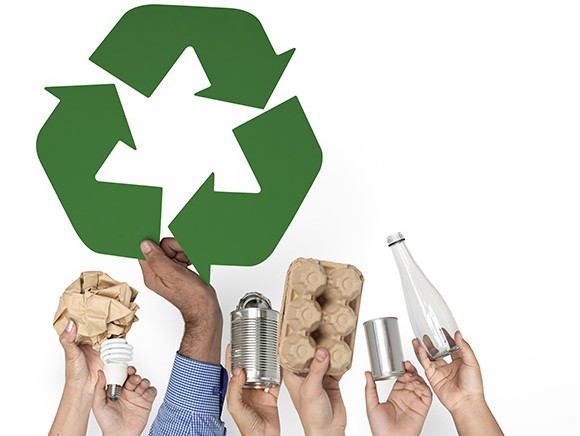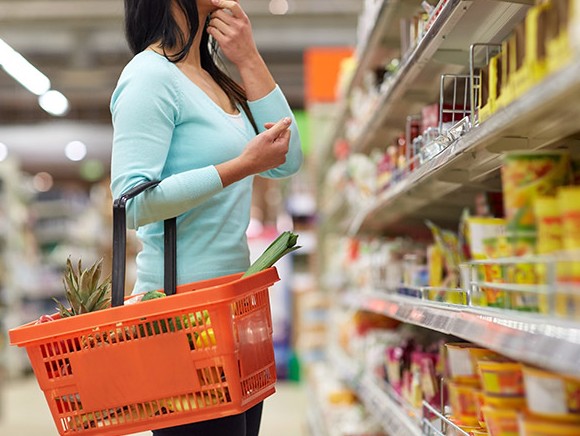
Bioplastics, storytelling, and the reduction of food waste are the terms that arise when experts from the packaging industry discuss current developments and innovations in their sector.
It is clear that there is still a lot to be gained in many areas. However, neuromarketer Martin de Munnik recommends being cautious of making adjustments to packaging that are too rigorous. “Consumers like surprises, but not change.”
'Sustainability translates into packaging that goes against food waste'
Ask any expert about trends in the packaging industry and you are sure to hear the word “sustainability”. Under the influence of European regulations and the wishes of consumers, who want to keep their costs down, but also want to set green policies higher on their priority lists, sustainability is becoming a more and more prominent theme. One of the things this translates into is a call for packaging that aids in preventing food waste. At PerfoTec in Woerden, the reduction of spoilage is an important theme when designing packaging applications. “From the retail end, there is great demand for solutions that reduce the spoilage of produce,” says Ivo Hendriks, commercial director of PerfoTec. “We develop packaging machines that have been installed with a laser, which measures the respiration rate of a product. Next, microperforations are added to the packaging to ensure that the product can breathe. That significantly extends the shelf life of the product.” PerfoTec supplies the produce sector, but it also does so for producers of dry sausage and several cheeses. Hendriks continues: “We often work with lettuce packagers, which is a fast-growing market. With our new O2 control machine, we are equipped to package lettuce directly into the optimum environment, at an O2 content of 10% or lower. Typically, lettuce is gassed first and then it takes 24 hours before the ideal environment is achieved. We extend the shelf life by a day. An accompanying advantage is that scarcely any loss occurs in the production setting, where there is usually a lot of spoilage during the process.
The use of alternative resources—biobased, biodegradable, or recyclable—is a different road to a more sustainable packaging industry. At Multivac, originally a German family business, where equipment such as thermoform packaging and tray sealing machines are made, testing with PLA has already been conducted. “It is a biodegradable plastic that can be disposed of along with green waste,” says Ton van den Bosch, account manager at Multivac. “It is not used much as of yet, but it is a much-discussed topic in the industry. For this reason, we are definitely expecting increased demand. If the market continues to press on, we are technologically prepared for it.” At the company, with its Dutch branch also located in Woerden, the current focus is primarily on the development of flexible machines and managing total cost of ownership. For this reason, Multivac recently developed a universal machine, which can quickly switch between systems. Van den Bosch: “Thanks to the increase in usage and sales channels, it is primarily smaller producers that need machines with multiple packaging applications. In the fish industry, products are now more often packaged in skin packaging. That gives it a premium, elegant look. Any juices released remain a part of the product. However, if a subsequent product has to be packaged with gas, then the machine can quickly switch so that the production process is only briefly halted. Beyond simply delivering machinery, Multivac also provides the services that they need. Total cost of ownership is still something that is regularly overlooked. Van den Bosch feels that it is a pitfall for buyers: “Packaging isn’t merely about machinery and technology: the service element is also important for the value of the purchased product and the process. That is why our help desk is available 24/7.”
“Consumers do not want to put too much effort into choosing a product”
At Multivac, they are continuing to sense a development that is impacting the packaging industry: the need for transparency. Van den Bosch: “The call for transparency and European legislation are demanding more information about the product on the packaging. For us, this means translates into things such as larger labels and other printing methods.” Banding specialist Bandall is playing to that demand with its core business. The company from De Meern provides bundling and banding solutions with foil or paper banding labels. A banding label is wrapped 360 degrees around the product, so it can provide much more additional information. Hans den Dikken, marketing manager of Bandall, explains: “Banding offers many options for carrying across an extensive message as well as the corporate style, while the product remains fully visible. Currently, the technology is used throughout the chain, but is mostly familiar to retailers. Examples of products with banding are meat goods, nuts, and prepared salads. Many food producers are still insufficiently aware of the options.” In this way, banding provides an exceptional opportunity for storytelling, which is a way of marketing a product that is heavily on the rise. Den Dikken: “For instance, Tony’s Chocolonely Easter eggs are packaged in a small box wrapped in banding, the back of which tells the story behind the product and displays the printed logo. In Germany, they are selling produce such as celery stalks with banding around them, which provides recipes on the back. Applications like these stimulate sales.” According to Den Dikken, the technology also contributes to sustainable industry: “Banding does not require nearly as many packaging materials when used. The banding holds the products together, which makes boxes or plastic wrap unnecessary. Furthermore, banding material is paper thin, which also reduces transport and storage costs.
Sustainability, a premium look and feel, and transparency are all great things, but when it comes to consumer behaviour, packaging primarily has to create the desire to have something. At least, that is what Martin de Munnik, neuromarketer and keynote speaker at Packaging Innovations 2018 has to say on the matter. He and Prof. Victor Lamme founded the business Neurensics, which conducts research into the emotions triggered by stimuli such as imagery, sound, and smells. Based on more than 45,000 brain scans that De Munnik and Lamme have examined, they provide marketing strategy consulting services for businesses. De Munnik tells us: “What helps create that desire is making the eventual emotional value of the product visible to the consumer. Facts about the characteristics of the product are important, but these should have an emotional slant. For example, our research shows that a photo of a happy woman on a carton of milk works better than an image of a cow in a field.”

Another rule of thumb from neuromarketing is that consumers generally do not want to put too much effort into choosing a product. De Munnik: “The systems in our brain hold us back from this. Convenience, recognition, and confidence play a significant role on store shelves. It is primarily large, established brands that must take science into account. “Established brands generate much more turnover thanks to automisation. Products are grabbed from the shelf without a second thought. If you start tinkering with that, e.g. By substantially changing the design on your packaging, then you will find yourself on shaky ground. Here’s an example: when Coca-Cola temporarily changed its cans from red to white during its “save the polar bear” campaign, it received 10,000 complaints. People even felt that the content of the can tasted different.” However, if you are launching a new product, then you can take that risk. De Munnik: “When it started, Milka hit the market dressed in lilac packaging, which was a revolution in the world of chocolate. It worked.”
In De Munnik’s opinion, this does not mean that established brands cannot make changes to their packaging. Consumers do not like change, but they do like to be surprised. Don’t start a revolution, start your evolution. De Munnik: “It’s a thin line to toe and it poses an interesting challenge to the industry.”
Source: Foto handen: ©Rawpixels/Shutterstock.com, foto winkel: ©Syda Productions/Shutterstock.com